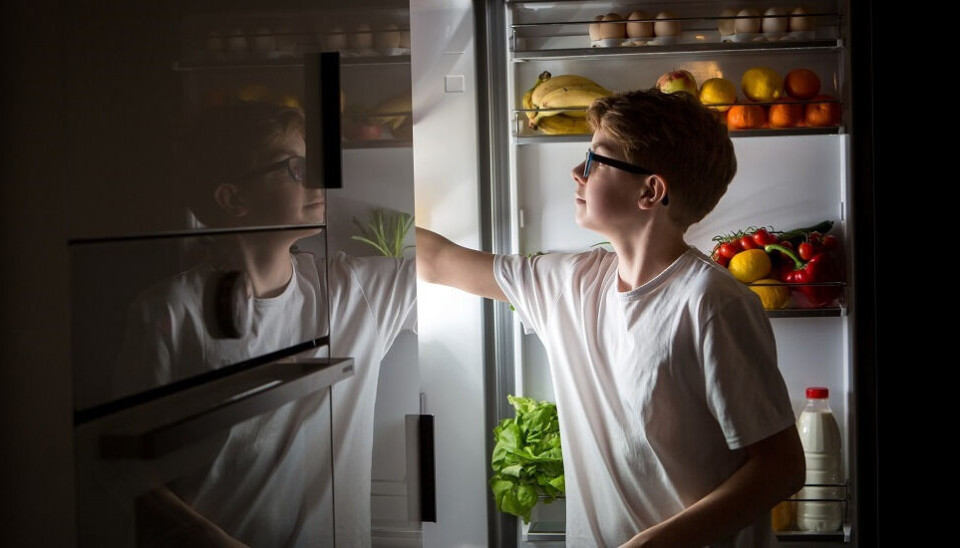THIS ARTICLE/PRESS RELEASE IS PAID FOR AND PRESENTED BY NTNU Norwegian University of Science and Technology - read more

Children gain weight before they start eating unhealthy food
Some children resort to food as a comfort or eat more for other reasons. But the link between predicted obesity-promoting eating behaviour and high BMI may not be what you think.
Big children eat more than other children. Research has shown that overweight children are more likely to use food as a comfort or eat until their plate is empty, even though they may be full.
But which comes first, eating behaviour or high body-mass index (BMI)?
A research group at NTNU has investigated this question in almost 1,000 children. Their study is based on participant data collected every other year from age 6 through age 14.
“We looked at the connection between predicted obesity-promoting eating behaviour in children and an increase in BMI,” says Oda Bjørklund, a PhD candidate and psychologist at NTNU’s Department of Psychology.
Their findings were somewhat surprising.
Bigger children need more food
“We’ve found that an increase in what we previously called obesity-promoting eating behaviours, such as emotional overeating, doesn’t lead to increased BMI,” says Silje Steinsbekk, a professor in the Department of Psychology.
But researchers are finding a link in the opposite direction.
“The more children’s BMI increases, the more likely they may resort to eating to deal with difficult emotions or because food is available, even though they might not be hungry,” says Steinsbekk.
So the weight gain comes first, and eating habits follow.
“Very simply put, this finding probably reflects that large bodies need more food,” says Steinsbekk.
At the same time, she emphasises that the reason some people develop large bodies is multifaceted and involves a complex interplay between heredity and the environment.
The NTNU researchers have only investigated how changes in eating habits are related to changes in BMI in school age children through to adolescence.
Studies of younger children and infants have found that eating behaviours characterised by the child eating for reasons other than hunger, such as food being available or comfort eating, increase BMI over time.
Prevention important
Obesity early in life tends to follow us into adulthood. This can have multiple well-known effects on our health.
“Even though we haven’t found that these eating behaviours lead to an increase in BMI from the age of 6, we still encourage parents to promote good eating habits in children,” says Bjørklund.
Bjørklund also treats eating disorders in child and adolescent psychiatry (BUP). She points out that eating behaviour is not only related to physical health.
“We didn’t look at what the children were eating, but how they related to food and eating,” she said.
Advice on wise food choices can be found on the Norwegian diet tool Kostverktøyet (link in Norwegian).
Trondheim Early Secure Study
The researchers used figures from the Trondheim Early Secure Study (TESS), which has followed almost 1,000 children every two years since they were 4 years old. The participants are now 18 years old, and the eighth survey is underway.
In this study, the research group used data from the participants at five different times, when they were 6, 8, 10, 12 and 14 years old. The Trondheim Early Secure Study has provided data for a number of studies on children’s development and health.
Reference:
Bjørklund et al. The prospective relation between eating behaviors and BMI from middle childhood to adolescence: A 5-wave community study, Preventive Medicine Reports, vol. 27, 2022. DOI: 10.1016/j.pmedr.2022.101795
Read more content from NTNU:
-
Are you more jealous of emotional or sexual infidelity?
-
More than 120,000 Norwegians suffer from work-related anxiety
-
Forever chemicals affect ducklings' genes while they are still in the egg
-
Why are pregnant women in Norway so worried?
-
Politics on Facebook: Populist parties choose divisive issues on purpose
-
Social media is connected to cyberbullying – but not how we thought





































